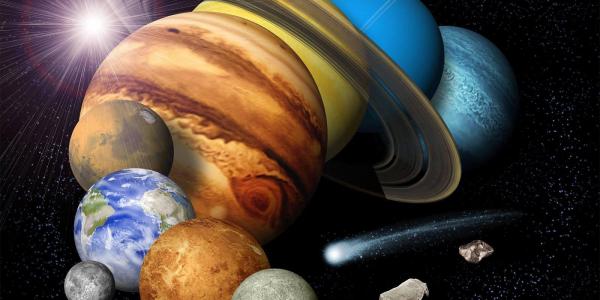Physics Colloquium with Andre Izidoro on Explaining How the Solar System Got So Weird
The discovery of the first exoplanet orbiting a sun-like star in 1995 opened a new era of research in planetary sciences. More than 4900 exoplanets have been discovered so far, reflecting the great success of past space missions as Kepler/NASA and Corot/ESA, as well as current ones as TESS/NASA. One of the most intriguing outcomes of our planetary census is that the solar system seems to be dramatically uncommon. Statistical analyses suggest that less than 1% of the sun-like stars host Jupiter-analogues. This fraction drops to less than 0.1% when one accounts for all star-types. "Hot super-Earths" or "hot mini-Neptunes" – planets with sizes between those of Earth and Neptune, and orbital period shorter than ~100 days – orbit at least 30%-50% of the sun-like stars in our Galaxy. Yet, no hot super-Earth exists in the solar system. Exoplanets come in a diversity of system architectures, largely different from those seen in the solar system. These findings have challenged and reinvigorated our view of how our own solar system formed and evolved. In this talk, I will discuss critical events that may have shaped the formation of our planetary system. I will use meteorite data, asteroid observations, observations of disks around young stars to build a planet formation model that accounts for the solar system planetary architecture. I will explain why Mars is relatively much smaller than Earth, the origin of Earth's water, the origin of the compositional dichotomy of the asteroid belt, and why the Earth is not a super-Earth. I will also explain how the solar system terrestrial planets fortuitously survived Jupiter's and Saturn's intemperate past. Finally, I will discuss the main predictions coming out of my planet formation models, concerning planetary composition and dynamical architecture, and how we will be able to test these planet formation theories with future observations.

